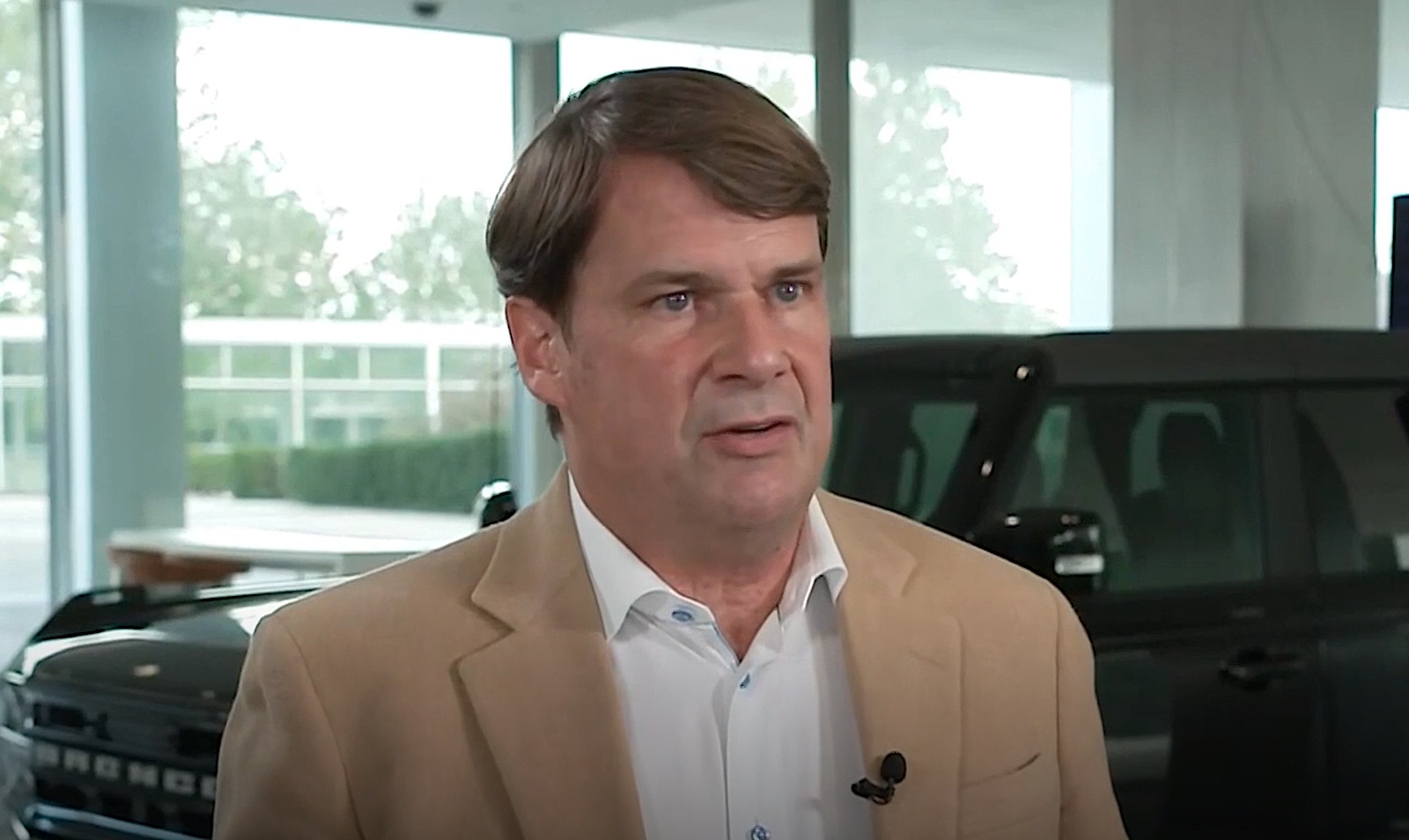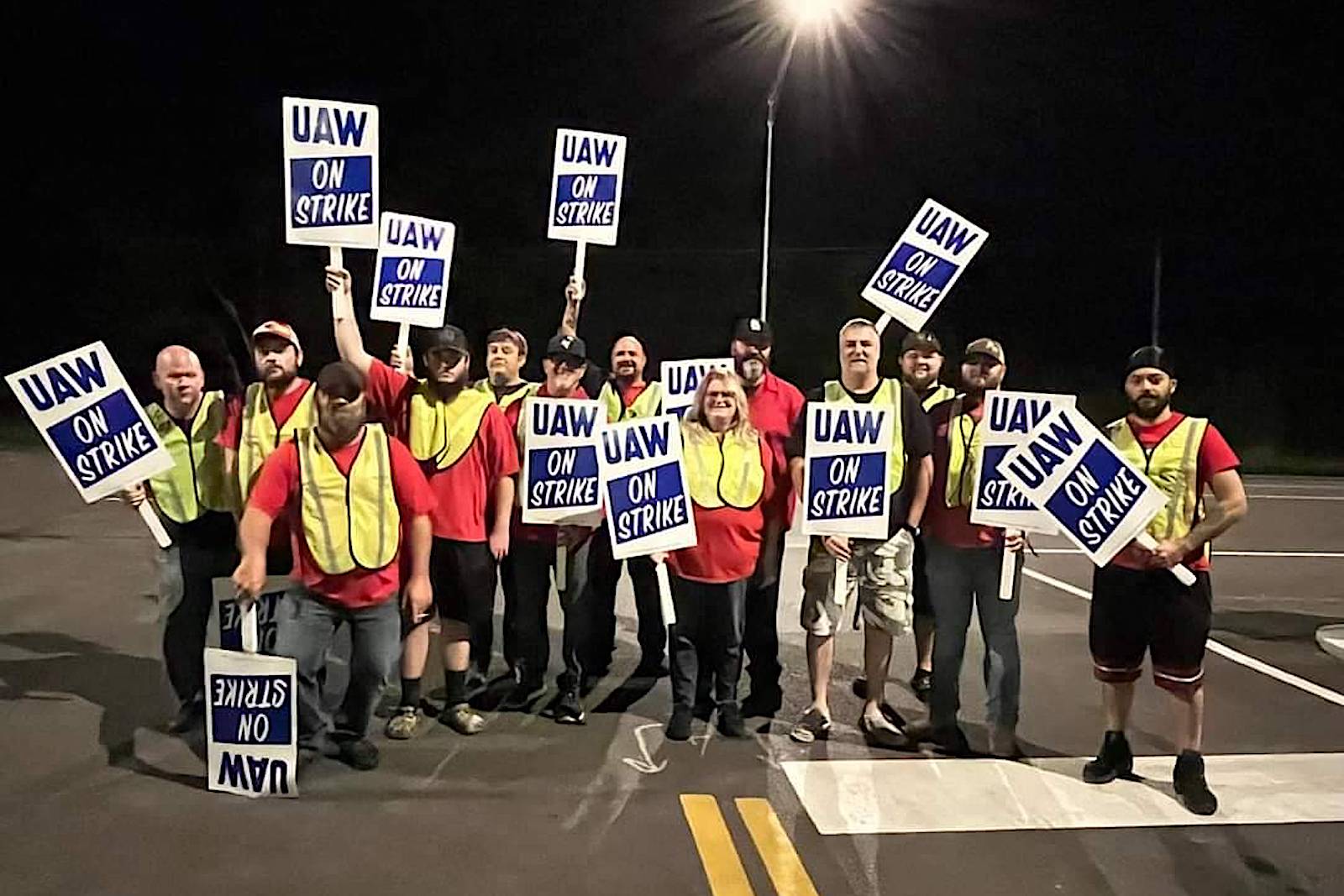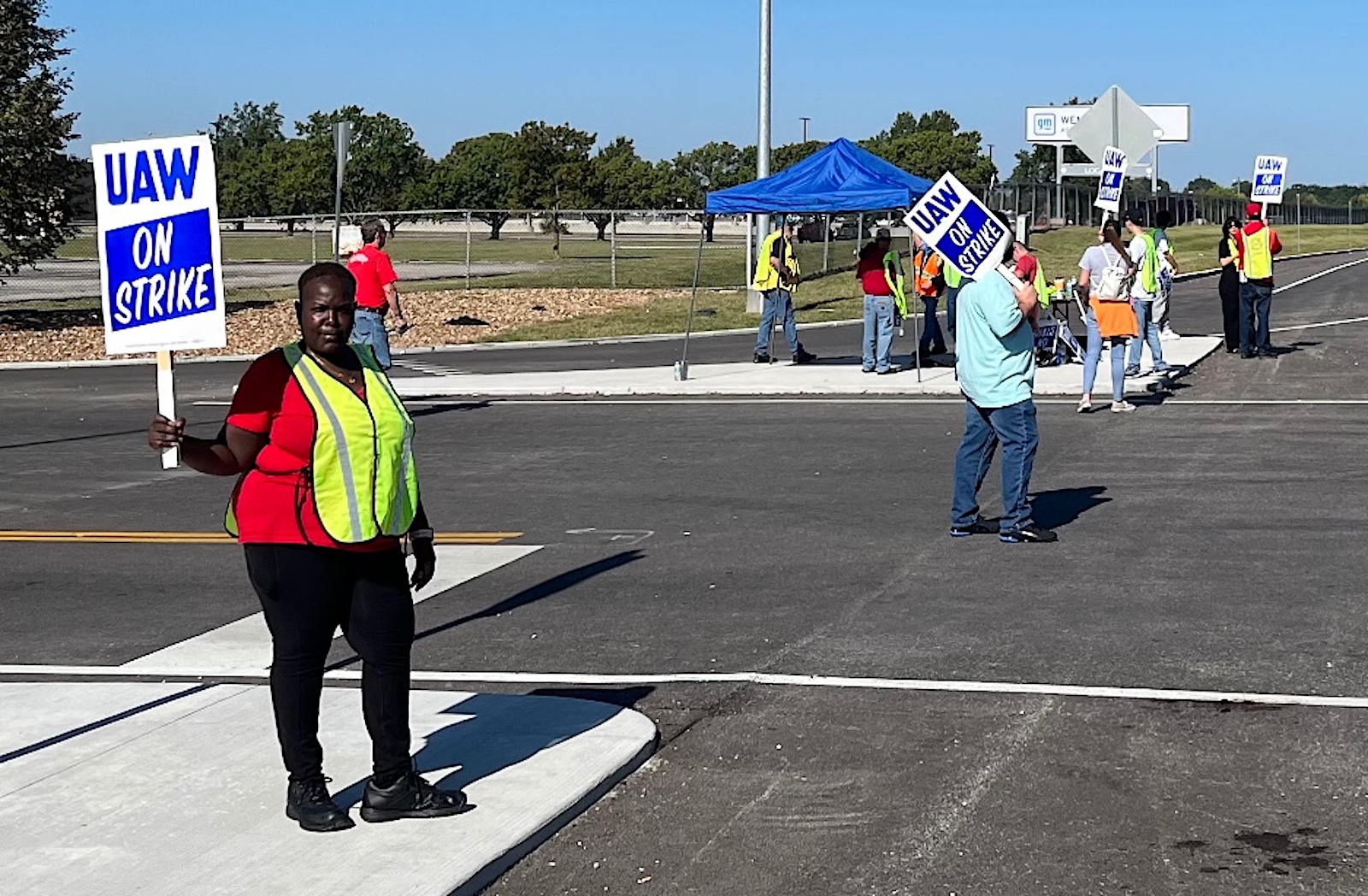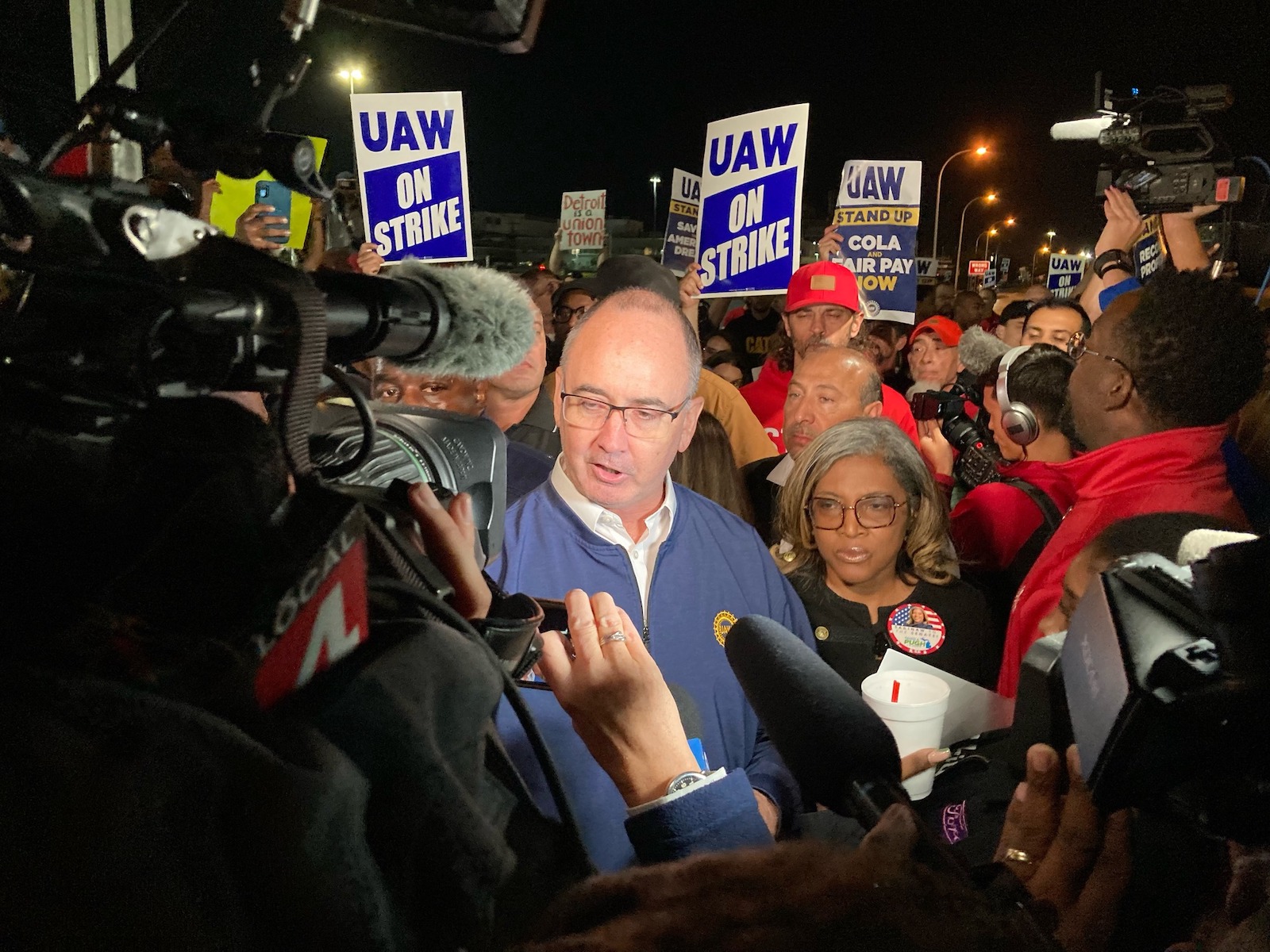Work stopped early Friday morning at plants in Michigan, Ohio and Missouri building some of domestic industry’s most popular vehicles as the United Auto Workers rejected last-minute contract proposal from General Motors, Ford and Stellantis.
Selective strikes by union members began at GM’s assembly plant in Wentzville, Missouri, where the company builds it popular midsized trucks, the Chevrolet Colorado and GMC Canyon. The second walk-off event came at Stellantis’s Jeep complex in Toledo, Ohio, where the Jeep Wrangler and Jeep Gladiator are built. Finally, Ford’s Michigan Assembly Plant in Wayne, Michigan where the automaker builds the Ford Bronco and Ford Ranger, was the third location.
“This fight is our generation’s defining moment. Not just at the Big Three, but across the entire working class,” added Fain. “We will stand up for ourselves. We will stand up for our families. We will stand up for our communities,” said Fain, who has emphasized the damage plant closings have done to towns and cities across the Midwest throughout the negotiations.
New leader, new strategy
“It’s the first time the UAW has struck all three companies,” said Fain, who made the announcement two hours before the expiration of the old agreement. In all, the limited strikes involve 13,300 of the union’s 146,000 members employed by Detroit’s Three automakers.

Workers at the Stellantis plant in Toledo, Ohio picket at the plant that makes the Wrangler and Gladiator.
Negotiators and executives at all three auto companies were clearly frustrated the union elected to strike even though they made what they clearly considered generous offers to UAW negotiators.
At Ford, the frustration was tinged with anger as the company faced a strike by the union for the first time in nearly half a century and routinely touted its friendly relations with the UAW, which it now highlights in the trucks ads, noting the company builds all of pickups in the U.S.
The friction at Ford was highlighted by the bitter exchange between Fain and Ford CEO Jim Farley.
Farley says Ford made a generous wage offer, eliminated wage tiers, restored cost of living pay increases and increased vacation time. The union disputes his contention that tiers were ended.
However, in an interview with CNBC, Farley expressed his concerns about the UAW proposal, stating, “You’re asking us to choose bankruptcy instead of supporting our workers.” He also mentioned that there have been no ongoing discussions or any counteroffers. “There is no progress being made at the moment.”

Ford CEO Jim Farley said the company would be bankrupt if met the UAW’s initial set of demands. (Photo courtesy of CNBC)
Financial hardship
Farley says if the UAW proposal had been implemented since 2019, instead of generating approximately $30 billion in profits over four years, the company would have incurred a loss of around $15 billion and would have faced bankruptcy by now.
“Unfortunately, the UAW’s counterproposal tonight showed little movement from the union’s initial demands submitted Aug. 3. If implemented, the proposal would more than double Ford’s current UAW-related labor costs, which are already significantly higher than the labor costs of Tesla, Toyota and other foreign-owned automakers in the United States that utilize non-union-represented labor,” Ford noted.
“The union made clear that unless we agreed to its unsustainable terms, it plans a work stoppage at 11:59 p.m. eastern. Ford has bargained in good faith to avoid a strike, which could have wide-ranging consequences for our business and the economy,” the company’s statement noted.
In an interview with CNN as the strike began, however, Fain called Farley a “liar.” Fain also dismissed Farley’s claim the union’s proposal would force the company into bankruptcy. “It’s a lie like everything else that come out of their mouths,” said Fain, who noted the company took more than a month to reply to the union’s economic proposal, which was presented Aug. 3.

UAW workers walked off the job at three Detroit Three plants Thursday at 11:59 p.m. when the contract expired.
Nobody’s happy
GM also said it was disappointed the union had chosen to strike one of its plants.
“The UAW has informed GM that they are on strike at Wentzville Assembly in Missouri as of 11:59 p.m. We are disappointed by the UAW leadership’s actions, despite the unprecedented economic package GM put on the table, including historic wage increases and manufacturing commitments. We will continue to bargain in good faith with the union to reach an agreement as quickly as possible for the benefit of our team members, customers, suppliers, and communities across the U.S. In the meantime, our priority is the safety of our workforce.”
GM Chair and CEO Mary Barra expressed her concerns about the strike and its impact.
“We know a strong GM is important to all of us,” said Barra, who added GM is offering union workers the biggest raise in the company’s 115-year history. “Remember: we had a strike in 2019 and nobody won,” says Barra. GM is offering 20 percent pay increase, while reducing the grow-in period essential to tiered-age structure from eight to four years.
Stellantis said the strike was an unfortunate development.

Work stopped early Friday morning at plants in Michigan, Ohio and Missouri building some of domestic industry’s most popular vehicles.
“We are extremely disappointed by the UAW leadership’s refusal to engage in a responsible manner to reach a fair agreement in the best interest of our employees, their families, and our customers. We immediately put the Company in contingency mode and will take all the appropriate structural decisions to protect our North American operations and the Company,” Stellantis says in a statement after the strikes began.
Fain became UAW president in late March after he narrowly won election over Ray Curry, who served as the UAW president for more than a year and had begun to open channels of communication with key executives at all three companies.
During his campaign for the UAW presidency, Fain ran as an outsider and promised to end the cozy relationship with management, which frustrated a substantial portion of union’s membership.
Meanwhile, JPMorgan analyst Rajat Gupta said a strike would help support retail demand for car dealers and pricing in the near term, although it would lead to potentially crippling supply shortages in the market and could create more affordability issues to prolong what is already a slow recovery in vehicle sales.


0 Comments